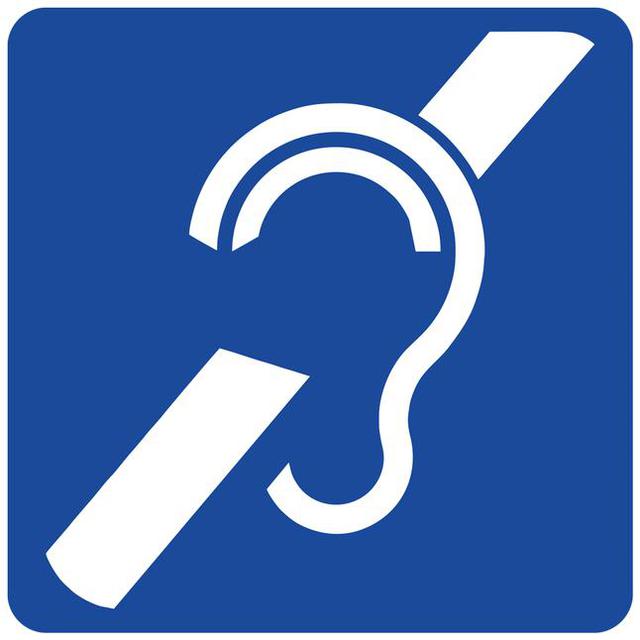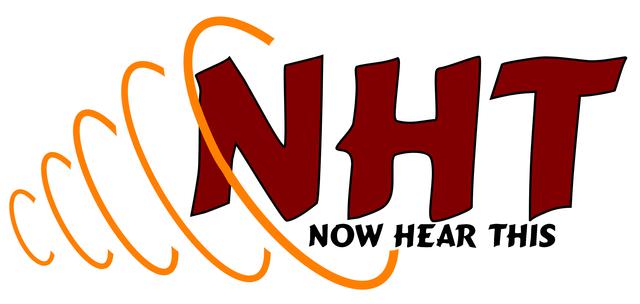The Americans with Disabilities Act (ADA) stresses that people with hearing loss have the same right to hear well in places of assembly as people with normal hearing. If a venue has a public address system, a hearing aid-compatible assistive listening system (ALS) must also be available. If you have hearing loss, stay up-to-date on technological advancements and regulations to ensure your access to sound in public settings.
TYPES OF SYSTEMS
AURACAST™ – This is a next-generation Bluetooth® audio broadcasting technology. Unlike Bluetooth, which pairs one device to one receiver, Auracast enables a one-to-many audio experience. It uses the same 2.4 GHz frequency range as Wi-Fi, where it silently “streams” sound that can be received by compatible hearing aids, wireless earbuds or headphones, and various other receiving devices to which wired earbuds, headphones or neckloops can be attached. In some applications it needs an “assistant” such as a smartphone, to identify a stream and assist the receiving device to connect to it. It can broadcast multiple streams, and the assistant would list them so the user can select and then connect to the desired broadcast. In instances where there is only one stream being broadcast, some devices may be able to connect without an assistant.
HEARING LOOPS - In its simplest form, a hearing loop is a discreetly hidden wire surrounding a seating area. When plugged into an amplifier that is connected to a PA system, the loop transmits the PA system sound as a silent electromagnetic signal that is received by wire coils called telecoils, which are found in about half of all hearing aids in use today or in receivers (usually a remote microphone) that can relay the sound via Bluetooth to hearing aids or some other appropriately enabled device. The hearing aid, with the telecoil turned on, will turn that signal back into sound. For hearing aids with two telecoil settings, one will receive and transmit the sound both from the telecoil and from the device's microphone, into the ear. The second setting will be telecoil only, eliminating background sound that would be picked up by the microphone. People without telecoil equipped hearing aids can be provided with a “loop receiver” that picks up the transmission from the hearing loop and transmits it to the user's ears via a headset of some sort. Sound from a hearing loop is mostly confined within the looped area but there is some “bleed” where the sound can be connected to outside of the circle. If the loop is installed in a grid pattern (called a phased array) rather than a simple circle, all of the sound is contained within the boundary of the loop.
NOTE - Many manufacturers have not included telecoils in their hearing aids in recent years. To compensate for this, many of them offer a dual purpose remote microphone for their devices. One function of the device is to capture sound with a microphone and transmit it to the user's hearing aids via Bluetooth®. The other feature in the device is a telecoil that, when activated in the presence of a hearing loop, will pick up that loop transmission and then stream it to the user's hearing aids, again using Bluetooth.
IR SYSTEMS - Infrared systems transmit sound via invisible light beams that are converted into sound, again, by a usually borrowed receiver with earphones ora neckloop. Since infrared waves don’t penetrate walls, these systems are preferred for some applications where privacy is a major concern. That features can present some problems in using the system as support posts or other obstructions inside of a meeting area will block the sound to anyone behind that obstruction.
RF SYSTEMS - Also known as FM systems, these systems were the most common in this country until recently when hearing loops became a prominent alternative. RF systems used as an ALS transmit sound via radio waves to a receiver and earphones or a neckloop, which can be borrowed in various public venues. Like a miniature radio, the receiver captures the radio signal and sends it to the user’s ears via the earphones. To meet the ADA hearing aid compatibility mandate, all RF systems installed, or significantly upgraded since 2012, pair 25 percent of receivers with neckloops instead of earphones, or electromagneticaly via a neckloop. When plugged into the receiver, the neckloop becomes a miniature hearing loop, transmitting sound electromagnetically to te hearing aid telecoils.
WiFi AUDIO SYSTEMS. WiFi Audio streaming delivers sound through an existing or dedicated WiFi network to smartphones, tablets, or other enabled devices. There may be, again, receivers available to be loaned by venues, so these systems also meet the ADA standards for an ALS. 25% of the receivers must be fitted with a neckloop instead of earphones. The neckloop acts as a miniature hearing loop. In some instances, loaner receivers or neckloops may not be available so those systems are not ADA compliant. This technology is popular in such settings as sports bars where multiple TV sets will be in operation, each with a different competition running on it. Users can connect to the WiFi system with a borrowed receiver or with their personal smart phone and pick the contest they wish to follow, and then connect to the sound for that TV. They are also popular in gyms where TVs may be suspended over exercise machines and viewers are able to choose which to connect to. If not properly installed, when used as an ALS, these systems may have mild to annoying latency (an echo effect).
Benefits of an ALS
Beyond the benefits unique to hearing loop systems, any ALS separates sounds that users want to hear, such as speech, from background noise. By using earphones or turning off their hearing aid mics, users eliminate much of the reverberation, ventilation hum, and other sounds that may interfere with their ability to discern words, improving the speech-to-noise ratio.
A recent survey* found that hearing aid users are six times more likely to use a hearing loop system than other ALS options in a public venue partly because it eliminates the need to borrow and return devices and remove their hearing aids to access the system. It also eliminates any hygienic concern over using borrowed devices. Furthermore, user’s hearing aids customize the sound to match the pattern of their audiogram—something earphones cannot do.
*NOTE – The survey was conducted before the availability of Auracast systems. They would also offer the same benefits that were previously attributed only to hearing loops.
HOW DO I FIND AND ACCESS AN ALS
The ADA requires the placement of ALS signage (this blue international symbol) >>
in venues with an available system. Look for the symbol at performing arts halls,
transportation hubs, legislative chambers, places of worship and any place where people assemble that uses a PA system. When you see this sign, if the letter T appears in the lower right corner of the sign, the ALS is a hearing loop. You should simply turn on the telecoils in your hearing aids. If your aids do not have telecoils, or you do not have hearing aids, enquire at the entrance as to where you can borrow a receiver and earphones.
If there should be an A on the sign, the system is Auracast and you should activate the Auracast program in your hearing aids. If your hearing aids are not Auracast enabled, or you have no hearing aids, again, enquire at the entrance as to where you can borrow a receiver and earphones. Privately owned Auracast enabled devices such as earbuds, earphones, smartphones and others, will work with the signal from these transmitters.
If the system is WiFi, and you have a smartphone with the appropriate app, connect to the symbol using your phone. If you have a smartphone but not the applicable app, inquire with management as to where you can download the app or borrow a receiver and earphones.
If an RF or IR is available, and our hearing aids of cochlear implant have t elecoils, borrow a receiver and earphones or a neckloop.
Places of worship are the No. 1 location with ALSs but, because the ADA does not usually apply to these venues, you may not see any signage or they may not have an ALS. Ask an official if a hearing loop is available. Except for places of worship, venues with any of these types of ALSs must offer users the choice of earphones or a neckloop.
ASSISTIVE LISTENING SYSTEMS
There are five different technologies used for assistive listening systems in the USA. Each offers features unique to its technology Here are links to a brief description to each:


